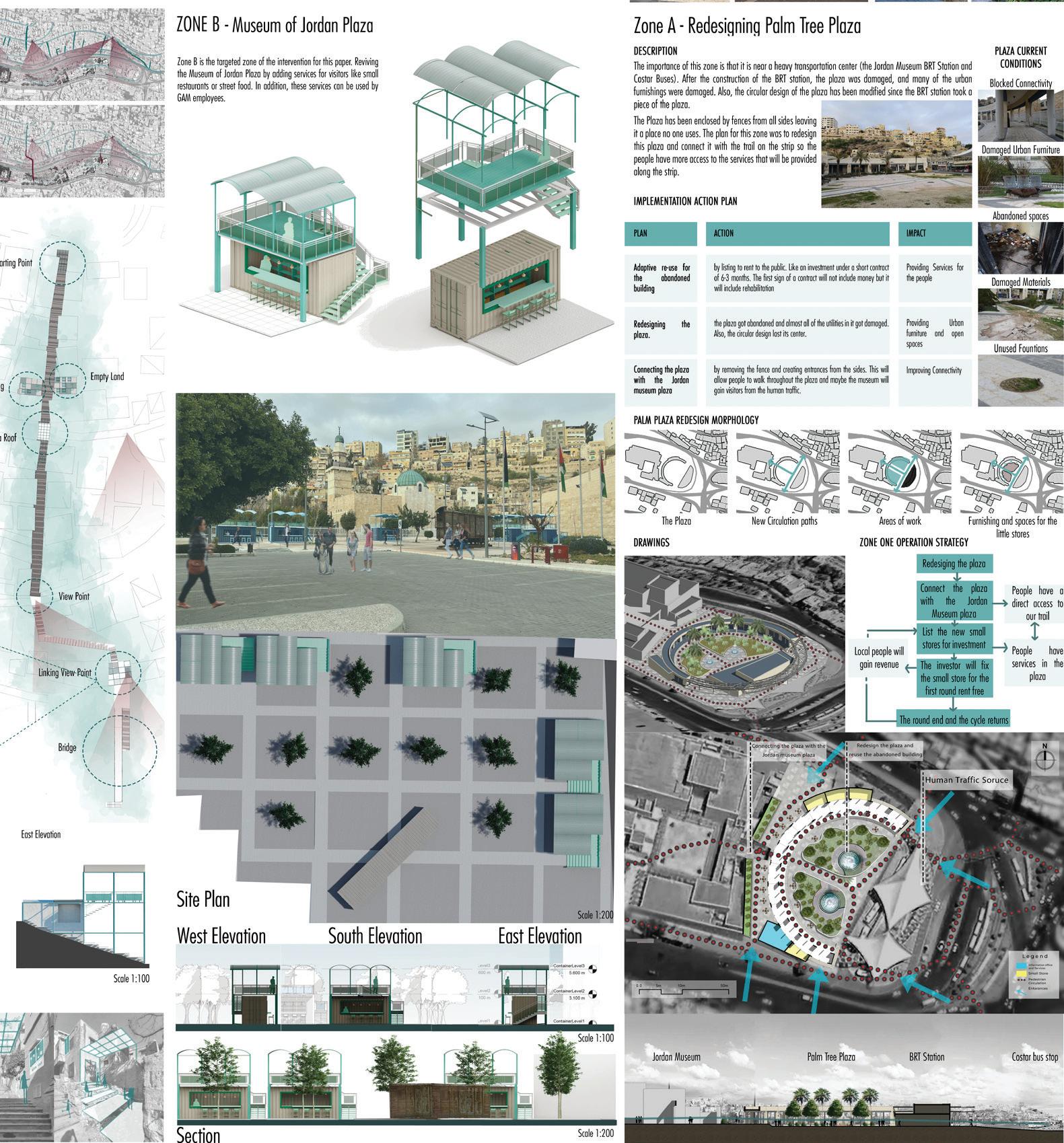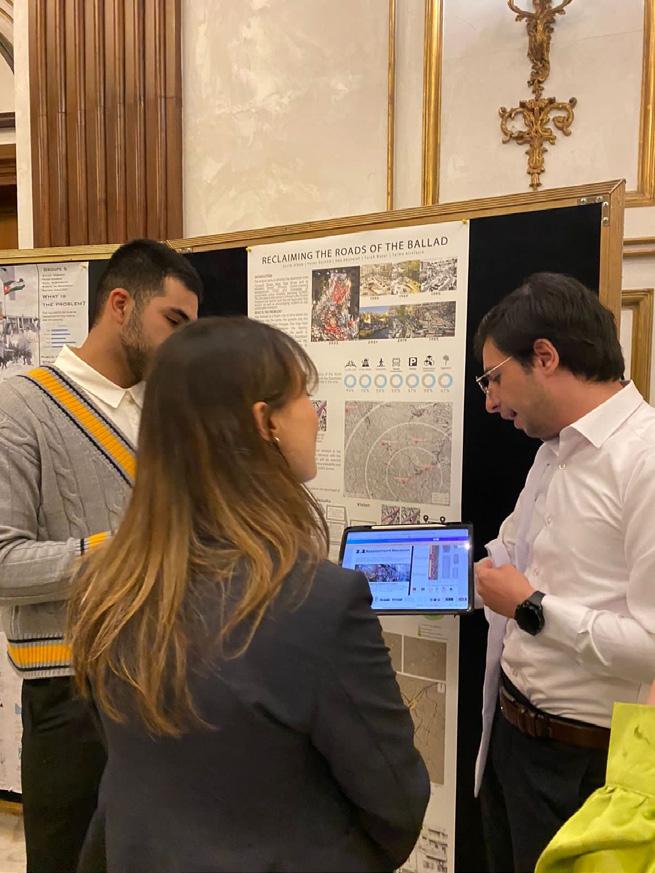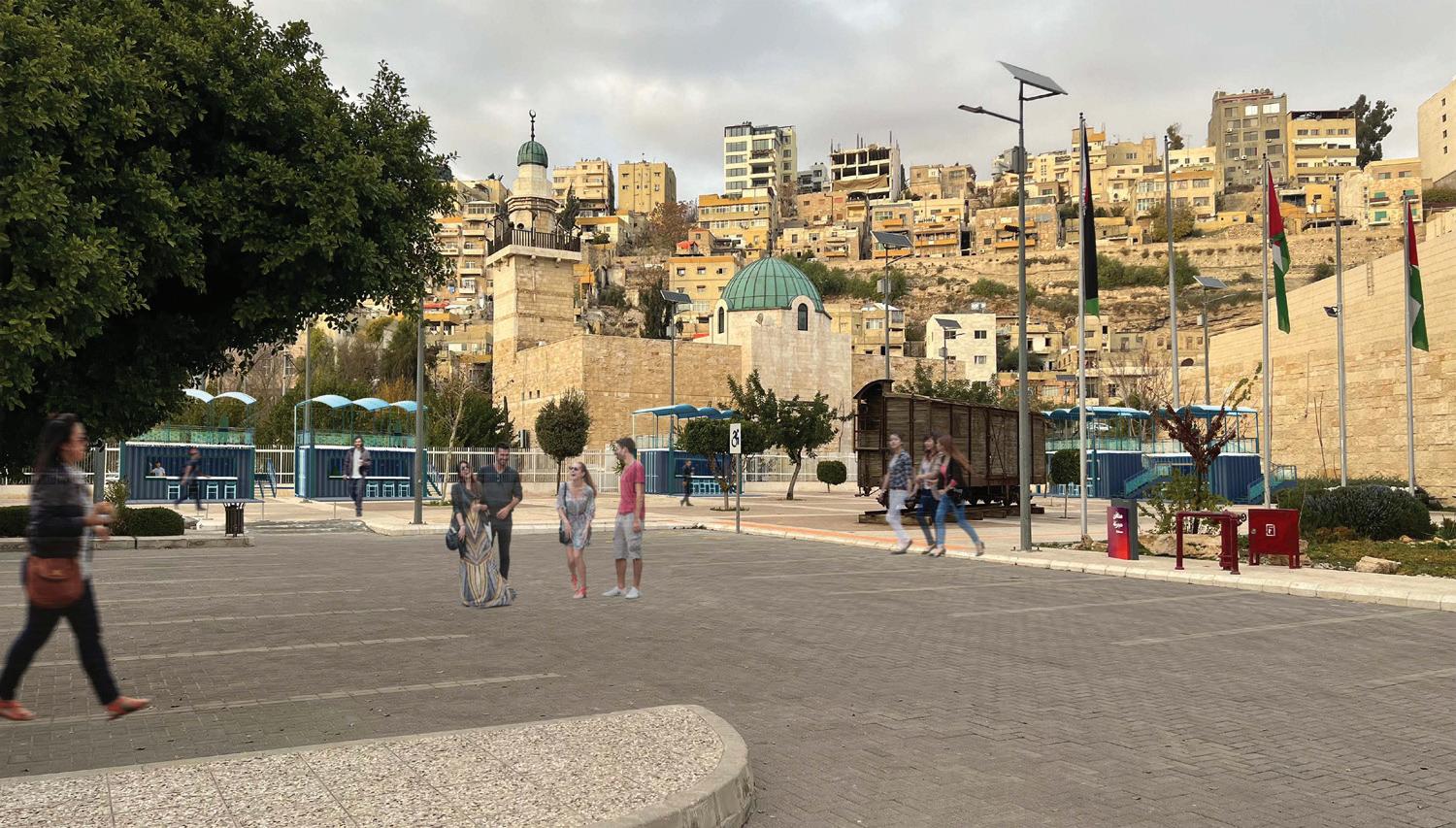
1 minute read
Restitching the island
by yazanrashed
Compitition project : Urban Planing and Design
Location : Downtown, Amman
Advertisement
Team : Yazan Rashed, Assim
Albaw, Leen Abu Nawas, Sara Al
Khatib
Supervised by Dr. Deyala Al
Tarawneh
Ras Al Ain Urban Island is situated in the stretch between the BRT Museum Station and Ras Al Ain Park. This island is essentially unconnected to the surrounding residential area because of this.
The strip has cultural structures that serve as tourist and local drawcards, however these attractions are typically only visited by one time or when an event is taking place.
Restretching the island concept entails making urban interventions and creating a tourist route that leads visitors from the mountains down to the valley.
These initiatives go beyond creating urban features or implementing space activation strategies to draw visitors.

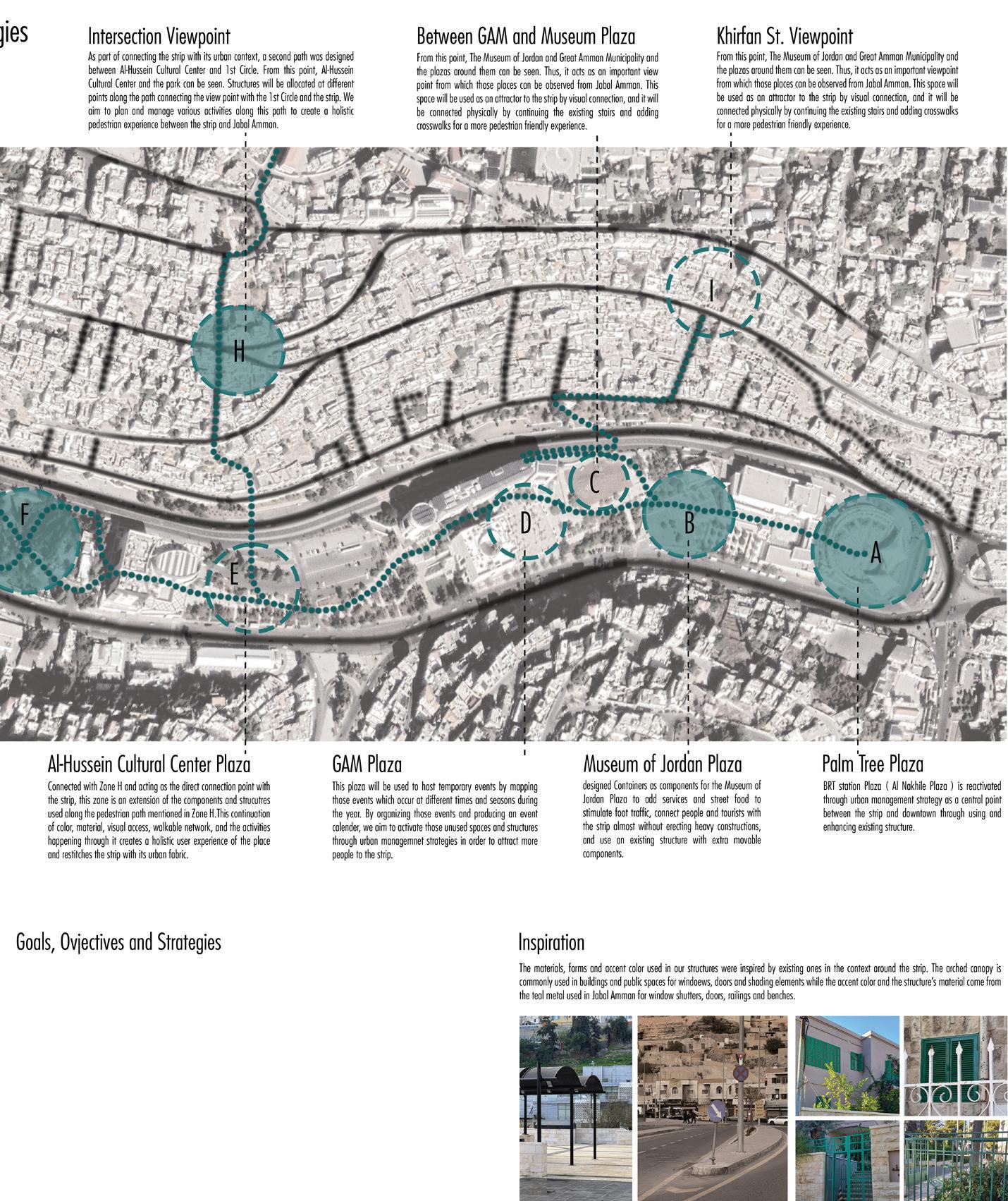
Strategies Of Space Activating
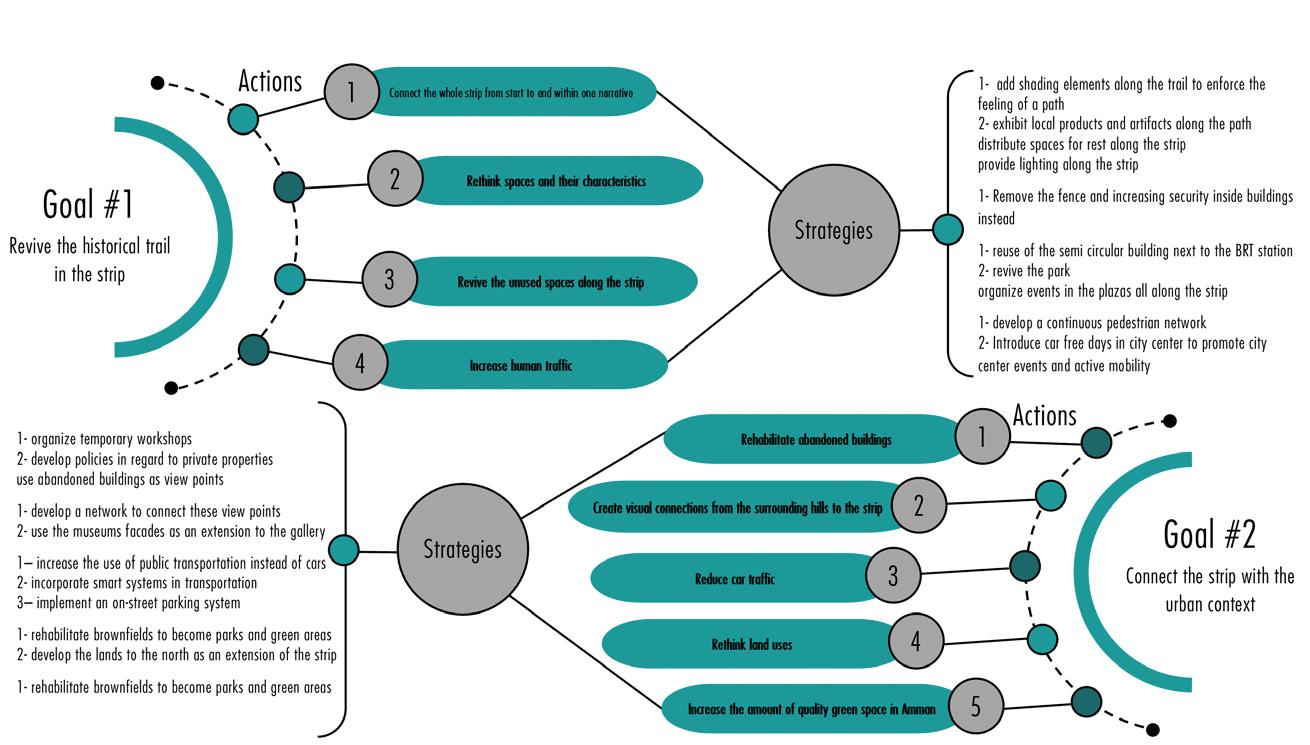
Temporary Use
-1 Temporary use can adhere to a schedule. It may also involve particular rituals. But in practice, it is informal and has a liminal purpose.
-2 it encourages behaviors or actions that break from everyday routine and promote a sense of social belonging. Temporary use has a variety of forms. It also has no limits on how long it can last.
Reuse
-1 High streets and urban sites can be brought back to life through reuse. It can be done by loaning a vacant space to a community organization at little or no cost.
-2 Reuse only works if it has willing partners. The occupants have to acknowledge that the space is not theirs to keep.
-3 city officials must grant temporary use permits and help occupants limit their financial obligations.
Programming
-1 programming organizes activities— such as art shows, skill-sharing classes, or markets—that are brief or changeable.
-2 programming allows organizers and community members to experiment with ideas because they are not constrained by long-term commitments.
-3 they do not have to make decisions based on feasibility or risk, and so creative ideas are born through trial and error.
Counter-Programming
-1 Counter-programming thrives on adaptability and informality. Organizers who are flexible about how they use a space can accommodate different activities.

-2 Counter-programmed spaces work with materials at hand. They are not curated to suit a particular style. we use resources that are economical and commonly found.
-3 it makes it collaborative because organizers need to go into the community to source materials and local knowledg
